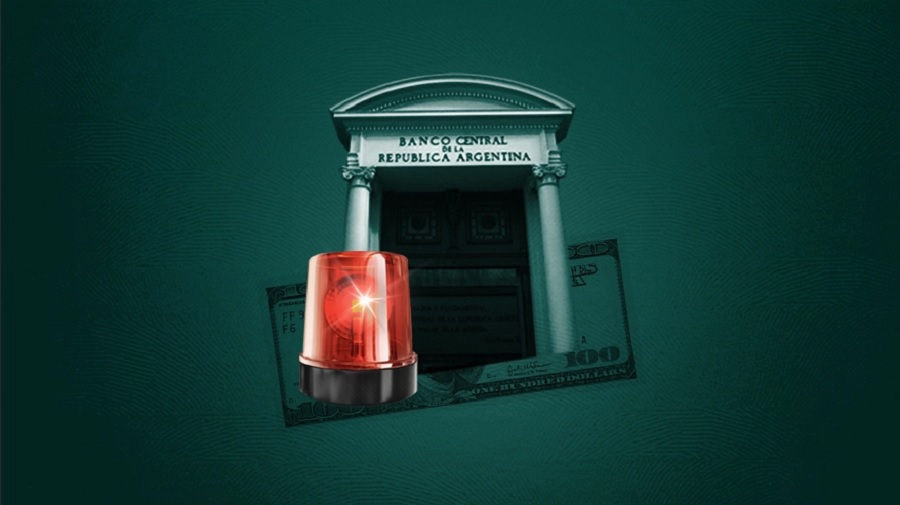RIO DE JANEIRO, BRAZIL – Why, with an inflation rate of around 50% per year, are interest rates so low? Why does the Central Bank, contrary to any other central bank in the world, not raise the cost of money when inflation is rampant, as it is in Argentina?
The country leads the world ranking of nations with hyper-negative real rates. What does that mean? That it is virtually unrewarding to be positioned in pesos, clearly encouraging higher inflation or the safekeeping of assets that will protect against rising prices (such as the dollar).

According to Compound Capital Advisors’ CEO Charlie Bilello’s statistics, Argentina is the country with the most negative rate in the world, considering the rate charged by each central bank versus inflation.
WHAT IS HAPPENING IN THE WORLD?
The benchmark rate for the local case is the Leliq, which Miguel Pesce’s Central Bank has set at 38% per year since November 2020 (the last time it changed it was a meager 2 points). Thus, with an annual inflation of 51.4%, Argentina leads with negative real rates of 13.5%.
Admittedly, in the region there is still a certain trend for central banks to have rates “somewhat” below inflation. Brazil, for instance, has the SELIC at 6.25% against 9.7% inflation (rate loses 3.4% against prices). The recent rate hike in Brazil (100 points a few days ago) was the 5th consecutive increase since its historical low (2%).
Other countries have been raising rates recently due to inflationary resurgence: Mexico raised its rates in August, Russia did likewise in September, Chile also in August and Peru this same month. Obviously, countries in the region do not have rampant inflation or ultra-negative rates like Argentina. Colombia pays a negative real rate of almost 3%, Peru’s is also negative at around 4% and Chile at 3.3% less than the price increase. Changes are “marginal,” and never exceed these figures.
There are no negative rates in the “developed world” like in Argentina, although most central banks have lowered the cost of money so that the economy recovers faster due to the pandemic, and are now beginning to stabilize it. In the UK there is a rate of 0.10% against inflation of 3.2% per year; the U.S. has a negative rate against inflation of 5.2% (Fed funds are at 0.13% versus a CPI currently at 5.3%).
A FLAWED CENTRAL BANK
Argentina’s Central Bank’s policy is unusual because it does not produce any upward movement despite a 50% inflation rate per year. The official arguments are that raising the cost of money would have an impact on loans and that it would do little or nothing to keep pesos in the system (those that are there stay because there is an exchange rate cap and it is impossible to dollarize, particularly for companies and institutions). Thus, with very low rates that lose against inflation, the Argentine financial system is becoming increasingly smaller.
Deposits have a low dynamism and growth can be observed in inflation-adjusted placements (UVA). But that happens because savers trapped in the stocks era need to hedge in some way if they are going to remain denominated in pesos. But instability in the foreign exchange market sets limits, since sudden movements in exchange rates encourage an outflow of these investments to alternative markets.
On the other hand, loans, the official argument for not raising rates, are not growing either. With data through August, they have accumulated 9 consecutive months of declines. Those linked to the real economy have also failed to rebound, although there has been some activity in corporate loans (advances and bonds).
Some believe that in any case, raising rates would not persuade the market that the fight against inflation is serious. Why? While in Chile bank credit is equivalent to 90% of GDP and in Brazil it reaches 70%, in Argentina it is only 12.5%. Therefore, raising the cost of money would have a limited impact and would not have the desired effect.
But others believe that it could be a signal. For the time being, Miguel Pesce’s Central Bank does not mention inflation. Neither in public nor in private. That is the job of the Economy Minister, or at least, of the Secretariat of Commerce with its price control.

